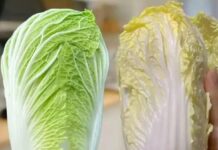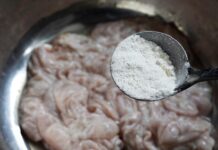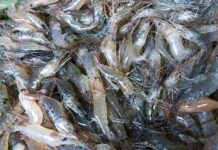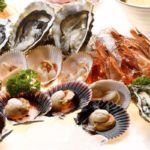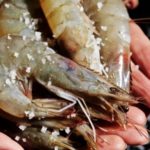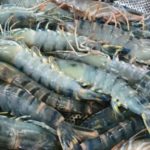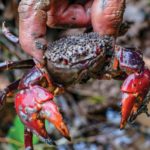The concept of shrimp and prawn differs in different regions. While many places refer to prawns as creatures with many shrimp-like characteristics but smaller in size, for many other people, prawns are a term used to refer to small fish of different species. Because of this, debates often arise when people argue about what is a shrimp and what is a prawn.
Instead of determining right or wrong in the differences of local languages, you need to know how to differentiate shrimp and prawn in common language, which is considered the standard, as well as the definitions of shrimp and prawn in biology.
Differentiating shrimp and prawn
Definitions of shrimp, prawn, and fish in biology
Ms. Nguyen Thi Ha, former Deputy Director of the Northern Environment Monitoring and Aquaculture Research Center (Research Institute for Aquaculture 1), said that shrimp and prawns belong to the crustacean group (Crustacea) or also known as the 10-legged arthropods. This is a subphylum of the arthropod phylum, which includes over 44,000 species such as lobster, prawn, fairy shrimp, whiteleg shrimp, blue legged shrimp, freshwater shrimp, brackish shrimp, etc.

The image on the left is a shrimp, on the right is a prawn.
Shrimp and prawns are mostly omnivorous animals, including species living in the sea (such as lobsters) and species living in freshwater areas (such as river shrimp) or brackish water (such as blue-legged shrimp). They move in water by crawling, swimming by kicking their legs, and in some cases, swimming backwards by bending their bodies to escape – a swimming style that is characteristic of many shrimp species.
Meanwhile, fish belong to the vertebrate animals, higher than arthropods on the evolutionary ladder. There are currently over 31,900 fish species, making them the most diverse group among vertebrates.
Therefore, in science, fish are fish and prawns are prawns, they belong to two different animal phyla. Science also clearly distinguishes between shrimp and prawns, instead of calling them “big shrimp and small shrimp” as in some places.
Differences between shrimp and prawn
According to Ms. Nguyen Thi Ha, shrimp and prawns have differences in size when mature, color and reproduction method, specifically in the following table:


Classifying shrimp and prawn by appearance
Based on external structure, according to Ms. Nguyen Thi Ha, the distinguishing characteristics of prawns and some shrimp species are as follows:
– Flower lobster – P. ornatus (also known as the ornate lobster): Large size, reaching over 1 kg/fish, with some reaching 2.5-3 kg depending on the rearing time.

It is called the flower lobster because its body has lines and patterns of spots.
– Gracile lobster – P. polyphagus: Smaller size than the flower lobster, 0.2-0.5 kg/fish, commonly raised in coastal provinces in central Vietnam.

The gracile lobster has a relatively thin shell with a lot of meat.
– Giant freshwater prawn – M. rosenbergii: Commercial size ranges from 0.1-2 kg depending on the rearing time, male prawns have very large claws, female prawns are smaller than male prawns. This species is commonly raised in the Mekong Delta.

Giant freshwater prawns are raised for commercial purposes in freshwater areas.
– Tiger prawn – P. Monodon: This species lives on the seabed, so it has a slightly darker color. Commercial size is usually from 5-50 fish/kg depending on the rearing time; it has been artificially bred and widely farmed in coastal provinces of Vietnam.

Tiger prawns are very popular among consumers.
– Whiteleg shrimp – P. Vanamei: Fast growth, dense farming, high productivity, a major export product of Vietnam; it has been artificially bred and widely farmed in coastal provinces of Vietnam.

Whiteleg shrimp is a common daily food of Vietnamese people.
– Fairy shrimp – C. flavilineata: Very small size, often used for soup, making shrimp paste, and used as bait for some rare species.

Fairy shrimp is sold at a cheaper price than shrimp, used for processing some dishes.
Above are the specific analysis of expert Nguyen Thi Ha on how to differentiate shrimp and prawn, to help readers have a basis for reference, to avoid confusion between these two species.
Source: VTV.vn
How to Choose Fresh Seafood: Important Cabinet Tips
In recent years, concerns have been raised over the practice of injecting urea and chemicals into seafood, making it difficult to find safe and fresh options. To help, DienmayXANH.com offers some tips on how to select the best seafood available. Seafood is a rich, delicious, and nutritious source of food, and this advice will help ensure you make the most of it.
Tips for Buying Safe, Non-Chemically Enhanced Shrimp
Looking for a quick and nutritious meal? GREEN SHOP has got you covered with their tips and advice on buying safe and fresh shrimp! Learn how to make a delicious dish that is both easy to cook and enjoy, without the worry of potentially harmful chemicals.












